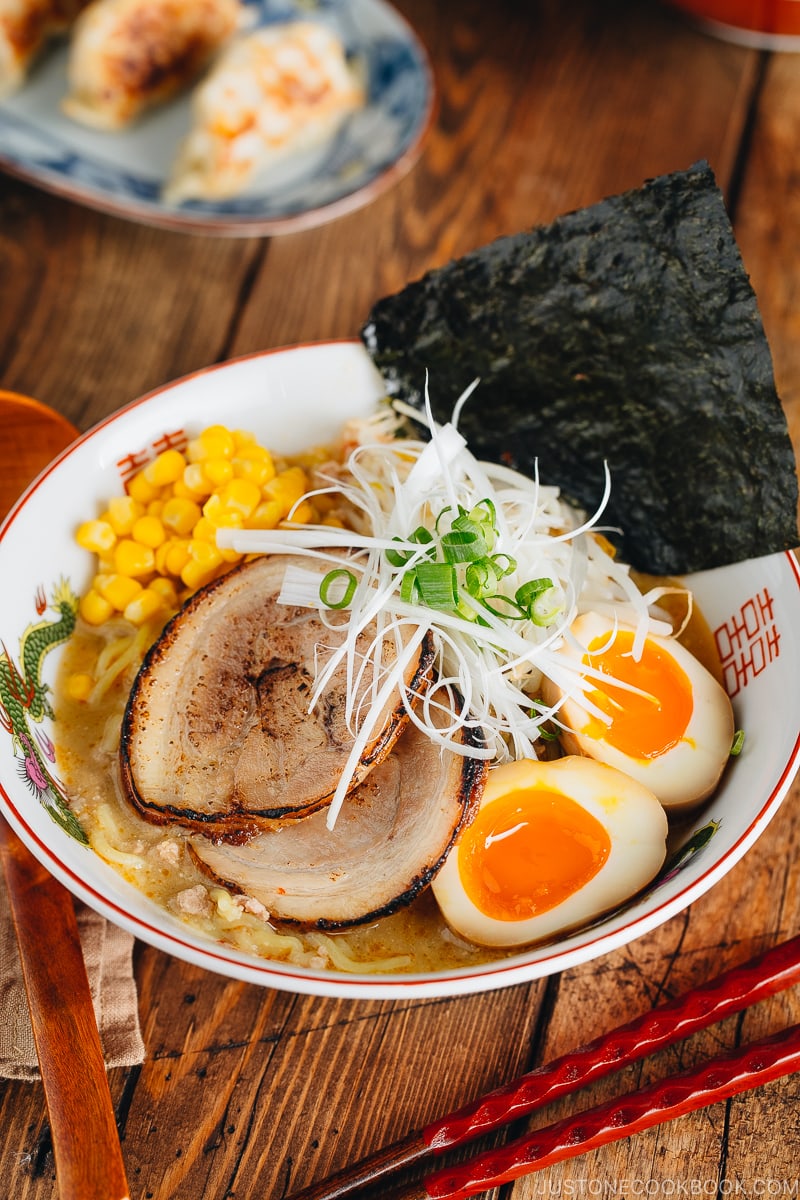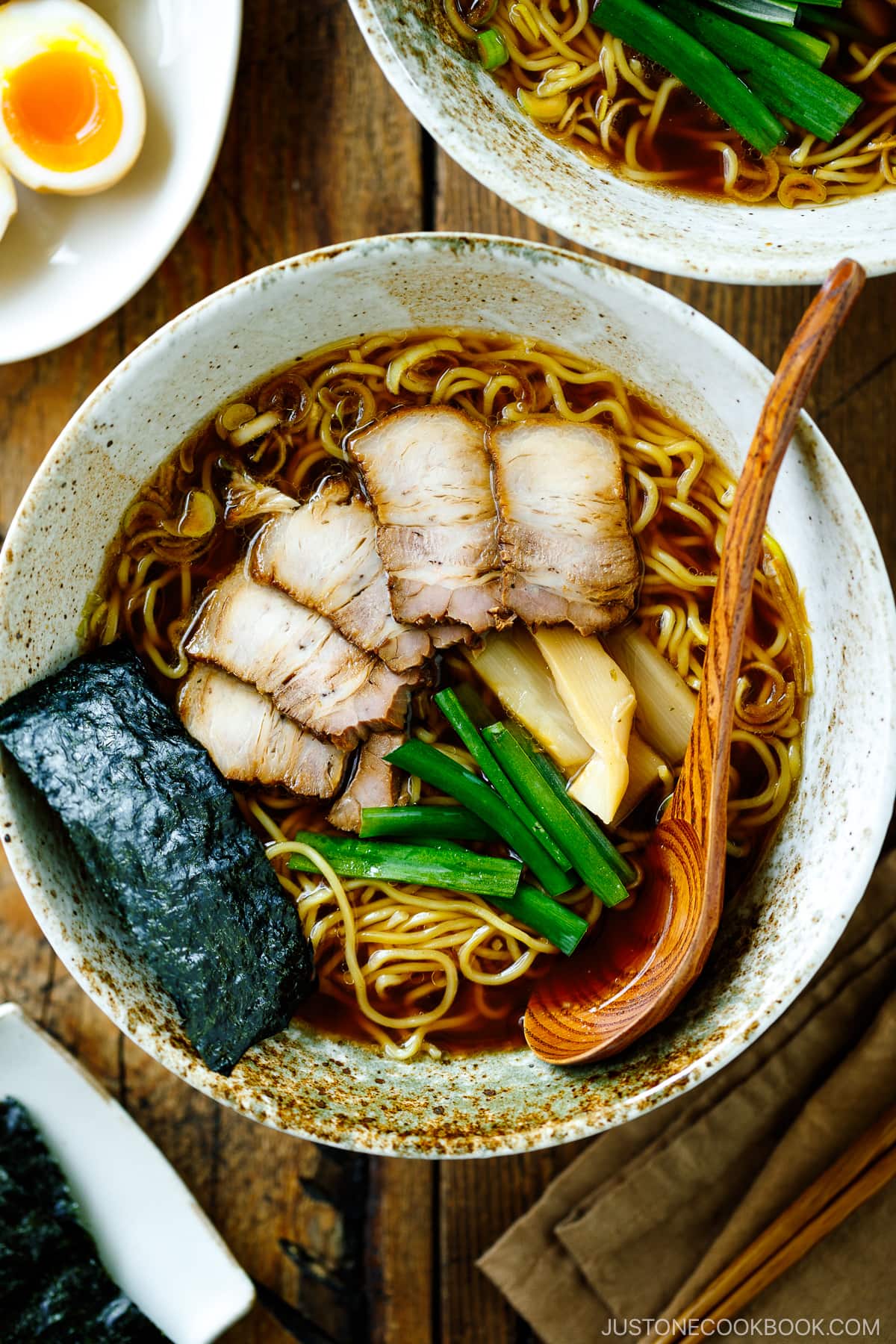Miso Ramen
Miso ramen originates in the Northern Hokkaido Prefecture of Japan, and is made, unsurprisingly, with miso paste, a traditional Japanese seasoning made from fermented grains and soybeans. Unique in flavor, the miso taste is probably best described as a combination of salty cheese and nuts with a creamy texture. An oily stock made of pork, chicken or fish and miso paste are boiled together to create a nutty and thick soup. Depending on the color of the miso used, the miso broth can be anywhere from yellow to red in color. Miso ramen tends to have a robust flavor profile, tangy but slightly sweet, and can be mixed with various toppings – butter and corn, leeks, scallions, bean sprouts, onion, cabbage, sliced pork, etc. Miso ramen is often paired with a thicker and chewy noodle.
Shoyu Ramen
Shoyu Ramen is made with a soy-sauce base, resulting in a tangy and salty flavor. The ramen broth is clear brown and made with either chicken or vegetable stock, seasoned with plenty of soy sauce to give it its signature brown color. Shoyu Ramen is generally lighter on the palette, as the broth is more one-dimensional and not as rich as the Tonkatsu and Miso ramen. Shoyu Ramen is often topped with bamboo shoots, green onions, carrots, fishcakes, seaweed, boiled eggs, and chili oil. Shoyu Ramen noodles are often thin and curly.
Tonkotsu Ramen
Tonkotsu Ramen, probably one of the most popular types of ramen, is made from a pork-bone based broth. The broth is made by boiling pork meat and bone together for multiple hours (the longer the better), resulting in a cloudy, thick and milky broth, that is creamy and richer than the other three types of tare. The broth is mild in flavor and tastes almost milky. This ramen is often topped with green onions, sliced pork, egg, seaweed, and pickled ginger. The noodles are often wiry and thin.
Here are some tips when preparing ramen
Cook the noodles
Add the noodles to boiling water and cook for 3–4 minutes. Boiling water cooks noodles evenly and makes them chewy. You can also try adding baking soda to give the noodles a good texture.
Add flavor
You can try adding miso paste for an umami flavor, or dried kombu, a type of kelp, to enhance the broth. You can also add other seasonings like soy sauce, sesame oil, sriracha, lime juice, chili flakes, peanut butter, fish sauce, ponzu, harissa, bacon fat, or curry.
Add other ingredients
You can try adding an egg, butter, American cheese, kimchi, or peanut butter. You can also try stir-frying the noodles or protein to add new textures and flavors.
Broil the noodles
You can try broiling the noodles before adding them back to the soup.
Use your own broth
You can use your own broth instead of the flavoring packet. You can also add chicken or pork bone stock to make the broth richer and more flavorful.


